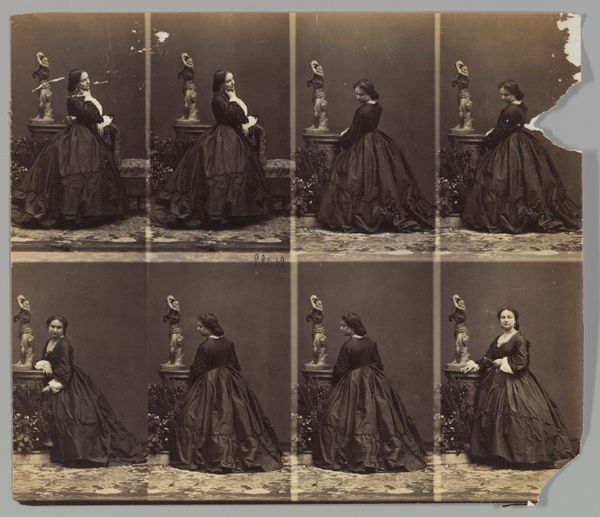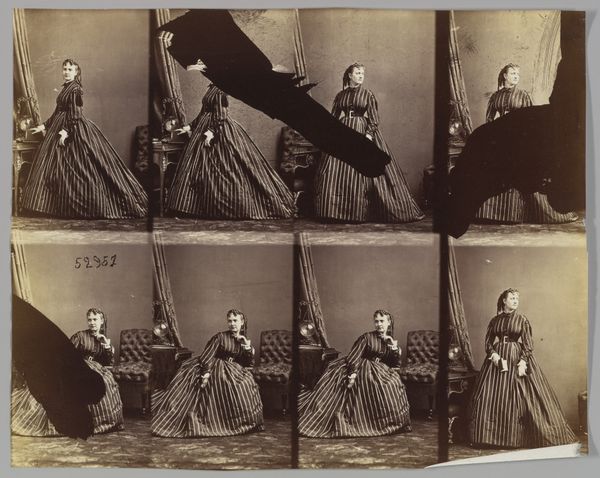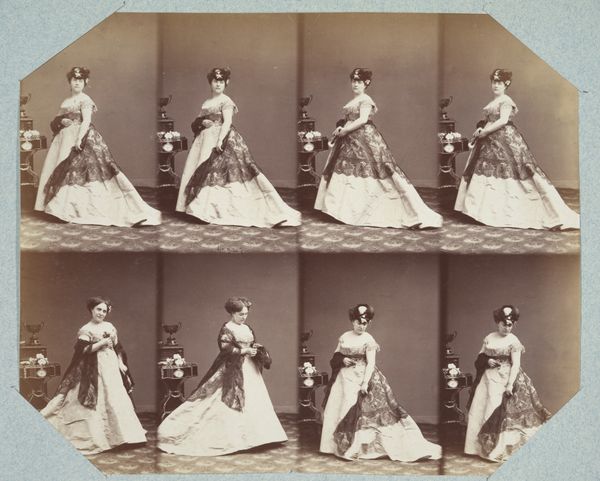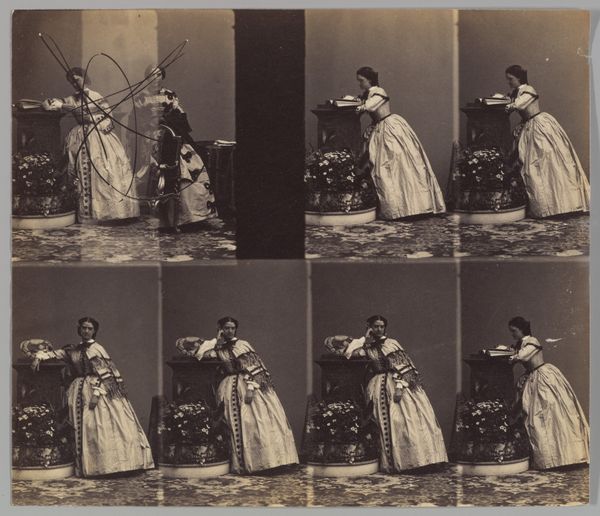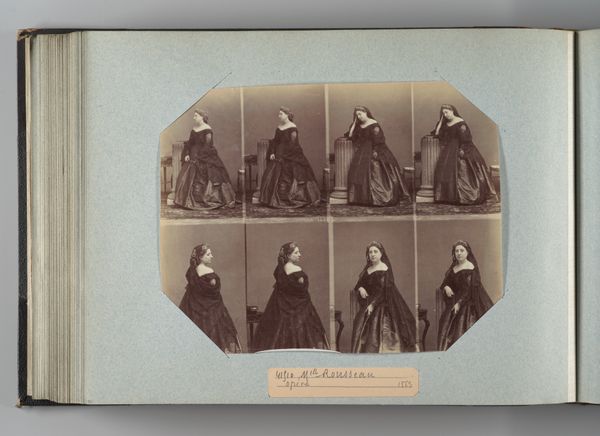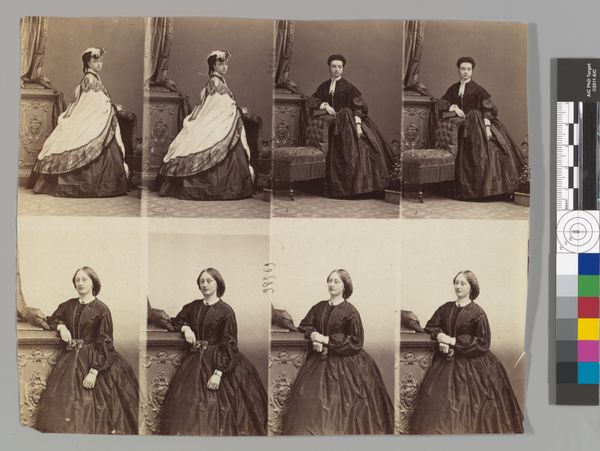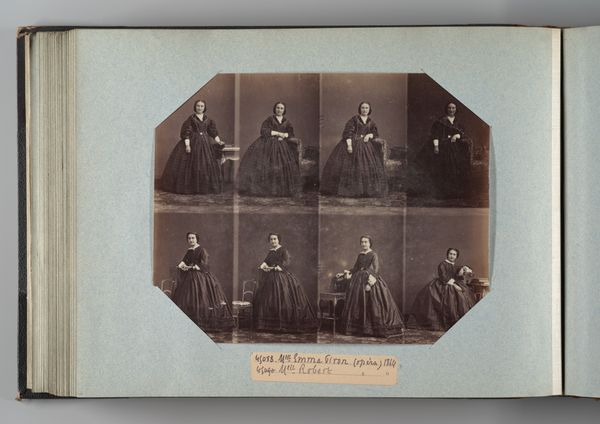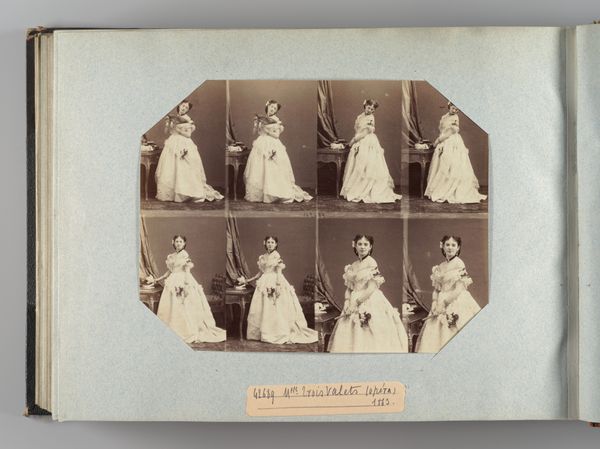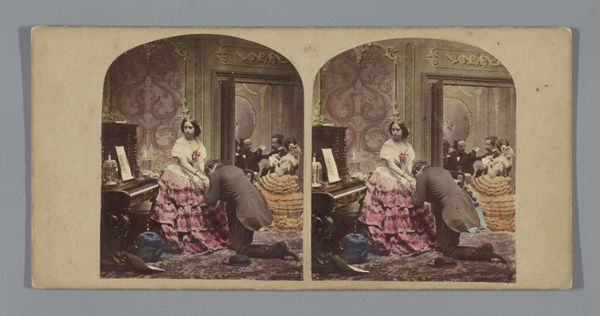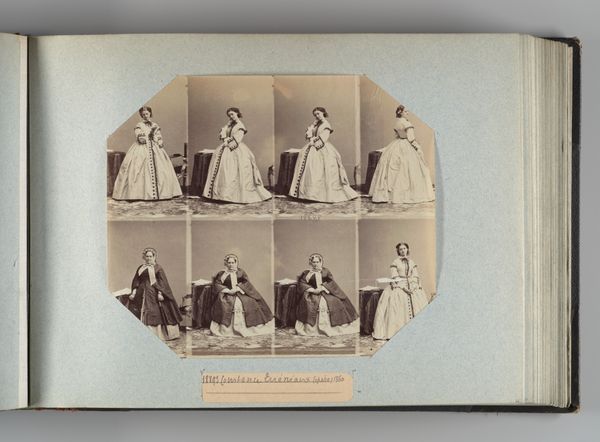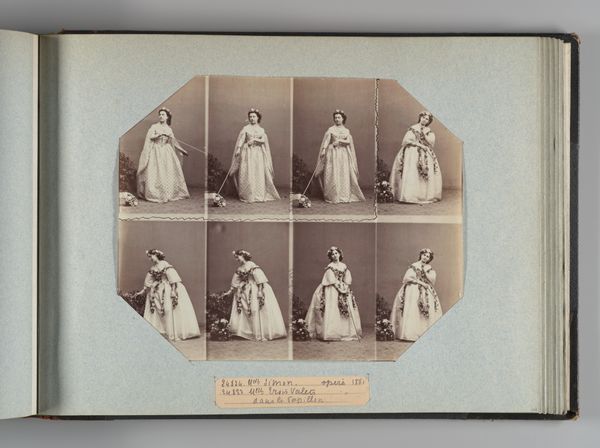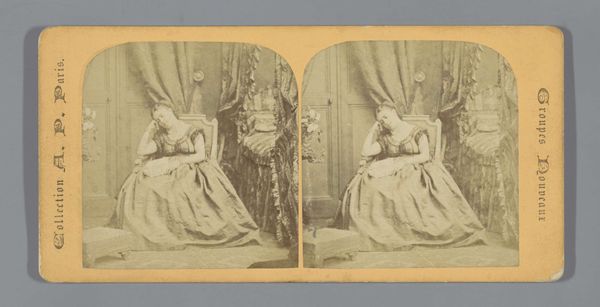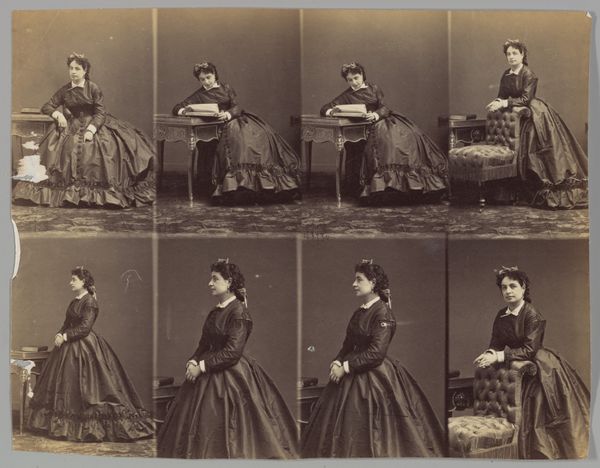
Dimensions: Image: 18.5 × 22.7 cm (7 5/16 × 8 15/16 in.)
Copyright: Public Domain
Editor: This is Andr\u00e9-Adolphe-Eug\u00e8ne Disd\u00e9ri's "Berthe," taken in 1862. It’s an albumen print, and what strikes me is the multiple exposures, almost like a flipbook of poses. What’s your read on this image? Curator: The multiple images, characteristic of Disdéri's carte-de-visite, serve as a form of repetition that reinforces the subject’s identity through varied postures and subtle changes. Note the subject, Berthe's positioning with classical statuary - isn't it evocative? What emotional weight does this superimposition evoke for you, a conversation across time itself? Editor: That makes me think about Romanticism, which I see referenced in the metadata. I guess it’s the idealized portrayal? Curator: Precisely! But consider further. The use of photography itself, in its infancy, to capture and disseminate the image of an individual connects with Romanticism’s interest in individual expression. The symbol becomes accessible, multiplied. A powerful act, don't you agree? Editor: So, it’s not just about making copies, it’s about making an identity accessible. But why the statue in the scene? What is its symbolic meaning? Curator: The statuary anchors Berthe to ideals of beauty, virtue, and even immortality – classical allusions meant to elevate her image, and perhaps to suggest certain qualities about her as a person that the viewer of that period might have instantly picked up on, creating this instant visual bridge that might feel totally foreign to the modern eye. The image is encoded with layers of cultural meaning! This would also speak to her social status and cultivation. Editor: That’s a perspective I hadn’t considered. It is fascinating to understand how the intended audience might have viewed this photo in its time. Curator: Exactly! Images operate as carriers of memory and identity, communicating on multiple levels simultaneously. Thinking about images as coded symbols that carry intentional as well as unintentional cultural information is essential for the critic. Editor: Thank you. I see this in a completely different light now!
Comments
No comments
Be the first to comment and join the conversation on the ultimate creative platform.
